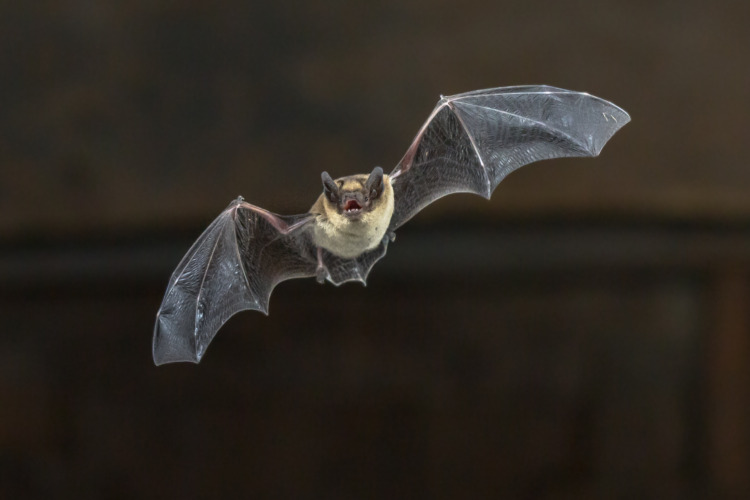It’s astonishing to think about the exceptional hearing abilities of certain animals living in our animal kingdom. Many creatures possess senses far superior to ours!
In this captivating exploration, we’ll uncover and appreciate the intricate ways these incredible beings use their ears and sound capabilities like nothing else on Earth. Prepare for an exciting adventure where you can witness a world of audio beyond what most humans could ever imagine!
Animals with Exceptional Hearing

We will examine the top animals with some of the best hearing abilities. These amazing creatures, such as bats and dolphins equipped with echolocation capabilities to detect their environment better or even a greater wax moth with an extraordinary hearing range, demonstrate how varied and specialized our animal kingdom can be regarding audio acuity.
Let’s explore this fantastic world more closely by looking at these incredible beasts and analyzing what makes them so special in terms of auditory perception!
1. Greater Wax Moth

The greater wax moth’s hearing capabilities are exceptionally sensitive and range up to 300 kHz, allowing it to hear the vocalizations of its main predator, bats. This remarkable capacity is an example of fantastic adaptation found in the animal kingdom, which gives them a great advantage over humans, whose auditory ability maxes out at 20kHz.
Its highly developed power of listening allows these moths to identify threats they may not be able to detect otherwise with their regular senses. This species‘ strong ability to both hear and respond demonstrates just how truly adaptable creatures can be when faced with external challenges like predation or other environmental changes.
See Related: Are Insects Animals? Exploring the Truth
2. Bats

Bats possess a remarkable auditory capability, able to hear sound frequencies from 9,000 Hz to 200,000 Hz. However, it is commonly thought that bats have bad vision.
Their specialized hearing and echolocation are utilized for tracking prey and orienting themselves during flight. Through emitting chirps in conjunction with clicks while traveling through the airwaves, they employ these sound waves as navigational tools, showcasing their astoundingly successful adjustment to nighttime life forms.
See Related: Most Mysterious Flowers in the World
3. Owls

Owls are renowned for their remarkable hearing abilities, which range from 200 Hz to 12,000 Hz, far surpassing those of other birds. Their ears are positioned asymmetrically, with one forward and higher than the other, to pinpoint sound accurately.
Due to their extraordinary hearing capacity, owls can detect prey when it is dark out by relying solely on their auditory sense – underscoring its importance for them and ultimately securing successful survival.
See Related: Forest Owlet: Why is it critically endangered?
4. Elephants

The animal kingdom has an impressive and versatile hearing capacity, exemplified by the elephant’s astounding range of 14-16 Hz—much greater than that of a human’s 20- 20,000. The ears play a fundamental part in their extraordinary sense of sound and help regulate body temperature.
With such expansive surfaces, areas enabling heat dispersion and thin ear flaps decrease temperatures. It showcases just how integral hearing can be within nature.
See Related: Difference Between African and Asian Elephants: A Comprehensive Comparison
5. Dogs

Dogs have been gifted with an extremely sharp sense of hearing, and their auditory range surpasses that of humans. This high level of sensitivity is due to the eighteen different muscles in a dog’s ears, which enable them to pinpoint where the sound originates from by twisting or tilting their ear structure.
This remarkable adaptation assists dogs in being aware of things around them along with ensuring vital communication between other canines while allowing for predator recognition and navigation purposes too.
See Related: Most Mysterious Flowers in the World
6. Cats

Cats have remarkable auditory capabilities, hearing high frequencies up to 64 kHz. Their ears are highly versatile, with approximately three dozen muscles, allowing them a 180-degree rotation for improved sound location.
This impressive hearing capacity is vital when hunting, as cats can use it to accurately locate and time their pounces on prey without fail.
See Related: Interesting Mexican Bobcats Facts
7. Horses

Horses’ ears are an excellent adaptation that plays a major role in their survival and social behavior. With ten muscles, these remarkable creatures can swivel their ears 180 degrees, allowing them to accurately detect sound vibrations.
This impressive hearing capability is vital for protecting herds and communicating emotions within them efficiently through sounds they make together. Ultimately, this sensitive organ has enabled the success of horses both inside and outside domestic settings today.
8. Dolphins

Dolphins have adapted to their marine habitat and showcase this by using echolocation for hunting as well as having superior hearing abilities underwater. They generate clicks or chirps and pick up the echoes that bounce off prey or other objects around them. Their extraordinary control of auditory senses is highlighted by the fact they can reduce their hearing capacity when needed, voluntarily decreasing it by 10-20 decibels to guard against loud sounds.
See Related: Hector’s Dolphin: Is It Endangered?
9. Rats

Rats are known for their amazing high-frequency hearing and the capacity to precisely recognize sounds, which helps them stay alive in a predatory world. Their range of listening is shifted towards higher sound frequencies than humans, allowing them to pick up on noises we can’t hear.
This superb hearing ability plays an essential role in survival, as it allows rats to detect potential danger or navigate through environments. Thanks to their built-in free auditory test results, which they have access to at all times, rats can detect potential danger or navigate through environments.
10. Pigeon

Pigeons have astonishing low-frequency hearing, which assists them in navigating their environment and spotting potential risks. This unique ability to hear infrasound, a type of sound beyond the range of human ears, makes these birds some of the finest navigators in the animal world. Their remarkable adaptability, demonstrated through their incredible hearing, speaks volumes about their capability as guides throughout this realm.
Low-frequency listening plays an essential role in aiding pigeons with navigation. It provides the unparalleled capability for detecting sounds that would otherwise be unnoticed by humans due to their reduced volume or pitch level on typical devices used for auditory analysis, like earphones, etc. Pigeons’ heightened sense allows them to perceive lower frequencies better than most creatures, making them one step ahead when it comes to finding food sources and avoiding any danger beforehand!
See Related: Most Endangered Birds Around the World
11. Penguin

Hearing is vital to the Gentoo penguin’s ability to thrive and stay safe. They possess an advanced capacity for hearing, with a sensitivity that ranges from 100 Hz up to 15,000 Hz — sharp enough to alert them against any possible danger in their surroundings and help guide them through their environment. This significant evolutionary adaptation highlights how vital sound can be for survival.
The extraordinary sensing power these animals have when listening underwater contributes greatly to safeguarding them throughout their lives. This is proof that they are amazingly equipped creatures!
12. Humpback whale

The amazing low-frequency hearing of Humpback whales is unparalleled, as it spans from 16 Hz to 200 kHz. This remarkable acoustic ability not only aids in communication but also assists them with navigation and foraging, allowing the species exceptional adaptability. These majestic creatures have even developed special vocalizations solely dedicated to the purpose of auditory reception, which highlights their important relationship with sound waves and listening at a low-frequency range beyond what most other mammals are capable of achieving.
See Related: Dwarf Sperm Whales: Are they Endangered?
13. Rabbit

Rabbits’ hearing range is incredibly wide, allowing them to detect predators from a far distance and keep themselves safe as prey animals. They can identify sounds ranging from 360 Hz to 42,000 Hz.
Hz at 1.8 miles away are genuinely impressive abilities that serve their defense well. Hearing plays an immense role in how they steer clear of danger due to its vast range and accuracy for detecting distant noises.
See Related: These Are 13 of the Longest Living Animals on Earth
The Wonders of Animal Ears

The human ear’s hearing capability range of 20Hz to 20000Hz is much lower than many other animals. These creatures possess highly sensitive hearing and can detect even distant storm sounds beyond our maximum frequency reach. For example, the greater wax moth has an extraordinary ability in this regard, which makes it easy for them to live peacefully in their environment and communicate accurately with each other through sound waves that humans would be completely oblivious to!
Though we may not have as much auditory capacity as some members from Kingdom Animalia, many species, including mammals, still rely heavily on precise audio detection. Thus having excellent ears can certainly give certain critters major advantages over us Homo sapiens when competing or surviving within any given habitat.
Ear Structures and Functions
Humans have three muscles in their ears that enable them to hear, while cats possess around thirty-six, allowing them to find prey and pick up distant storms. Dogs’ eighteen ear muscles let them move their ears to better detect sound. Horses are fitted with a decently sized ten-muscle bundle for the same purpose, allowing 180-degree ear movement.
Many species have evolved hearing abilities that outmatch humans’ range—such as low frequencies and ultrasonic or infrasonic ranges. An incredible example is greater wax moths, whose perception extends up to 300 kHz, enabling them to evade bats! This diversity amongst animals shows just how intriguingly varied structures can be found throughout our animal kingdom regarding auditory prowess, like hearing detection at distances or various sounds containing different frequencies.
Adaptations for Different Environments
The animal world has developed specialized hearing abilities to meet the different needs of their environments. For example, African elephants have some of the biggest ears in nature, which help them collect sound waves and pick up subtle low-frequency vibrations from faraway places. They can hear other elephants up to 4 kilometers away!
Owls also possess a powerful sense of hearing that helps with hunting. Through asymmetrically placed ear structures, they can single out sounds more accurately than most animals, giving them an edge over their prey, such as rodents burrowing under snow. All these unique modifications demonstrate how finely tuned certain species’ listening capabilities have become for living optimally in their habitats.
Unique Hearing Abilities in the Animal Kingdom
The hearing ability of animals is fascinating and varied. Many creatures, such as bats or dolphins, possess echolocation to locate their surroundings, while elephants rely on seismic communication. By studying how animals hear sounds, we can understand more about how sound plays a key role within the animal kingdom for things like navigation and survival purposes.
This shows us why it is so essential for many species to be able to listen properly. Hearing allows them to interact with their environment and comprehend noises that otherwise would go undetected by human ears, proving its importance across the board!
Echolocation in Bats and Dolphins

Many species of animals, including bats and dolphins, have an incredible adaptation known as echolocation. They can create a detailed map of their environment by emitting high-frequency sound waves and listening to their returning echoes.
This biological sonar system allows these creatures to identify objects even in low visibility, significantly aiding navigation and hunting. Moreover employed by other animal species like shrews, certain whales, and some birds, demonstrating just how versatile hearing capabilities are within the animal kingdom. Such remarkable abilities showcase just how important sounds are for survival amongst many different kinds of animals!
Seismic Communication in Elephants

Hearing in the animal kingdom is immensely varied, as shown by elephants’ ability to communicate using seismic vibrations. These messages are communicated through low-frequency tremors generated when they stomp their feet on the ground and can be received from afar. This mode of communication serves many purposes for them, such as coordinating group activities or alerting them to potential danger while helping locate food sources too.
This remarkable form of expression demonstrates how versatile these creatures truly are. It also showcases a unique aspect of hearing that helps underscore its importance in this domain of living beings across the globe!
The Role of Hearing in Animal Communication and Survival
Hearing plays a critical role in the lives of many animals, from helping them communicate to allowing them to detect and evade predators. This adaptive capacity has been revealed through amazing traits like the echolocation possessed by bats and dolphins, seismic communication adopted by elephants, and an exceptional range of hearing found in creatures like the greater wax moth.
These remarkable examples demonstrate the diversity within this realm and its importance for survival throughout nature. The adaptability displayed shows that these animals are determinedly capable of facing various obstacles arising from their habitats.
Communication Among Animals
Hearing is essential in animal communication and cannot be undervalued. Through vocalizations, whistles, or clicks, animals can identify potential mates, alert each other to possible dangers, and find their prey.
To the creatures discussed earlier, many species depend on sound vibrations for survival, including horses that use different noises to dialogue between them. At the same time, moths rely upon it to detect bats chirping ultrasonically and avoid them accordingly. Thus, it demonstrates how vital auditory capacity is across the animal kingdom.
Navigation and Predator Detection
The auditory capabilities of animals are vitally important to their survival and success in the animal kingdom. These creatures use remarkable hearing ranges, as well as asymmetrically placed ears, such as those found on owls, for navigation and detecting potential threats like prey or predators during nighttime hours. Dolphins also possess an amazing skill called echolocation, which helps them hunt for food while avoiding danger.
Hearing is a fundamental part of many species’ defense mechanisms. Rabbits depend heavily on it to avoid approaching dangers with acute senses similar to our listening skills but more enhanced than ours could ever be! Animals have adapted effectively over time due to this sense, which serves multiple purposes both day and night—for hunting prey, navigating terrain, and even finding mates…
This emphasizes how essential hearing abilities truly are within the world’s wildlife populations – all serve powerful roles in promoting continued thriving despite natural hazards present everywhere around us today! The impressive power held by these senses needs Exploration so we can continue understanding what makes all living organisms unique from one another – showing just how much adaptation goes into each distinctive creature’s capacity for life outside its home environment, too!
Summary
The animal kingdom is remarkable for the wide range of creatures with exceptional hearing. From greater wax moths with an unparalleled capacity to bats and dolphins using echolocation, these amazing animals highlight how hardy their aural senses are in diverse settings.
We can witness this uniqueness when we take note of nature’s myriad sounds – like the powerful ears of wild beasts that go beyond our human perception. The resilient and adaptive qualities revealed by such extraordinary examples prompt us to recognize a stunning world outside our limited capabilities!
Frequently Asked Questions
What are animal ears called?
Kemonomimi is a term used in manga and anime to refer to characters with features reminiscent of animals, such as ears or tails. Animal-like ears can be aptly labeled as Kemonomimi.
How do animals’ ears work?
Animals’ ears can translate sound waves to allow them to hear. Through the process, outer ear funnels capture sounds and direct them into the middle ear, where they become mechanical energy passed on via fluids in their inner ear so that the brain can interpret them as nerve signals. In this manner, creatures can perceive audible noises like sounds with their ears.
Why do animals have different ears?
Different animals have adapted their hearing capabilities by evolving ears of different sizes and shapes. This has allowed predators to better focus on potential prey, as the shape of their ear directs sound in front. Consequently, it gives them an advantage when hunting for food.
This diversity allows creatures to become more efficient inhabitants within a specific environment; each species is now well equipped with its own auditory senses tailored to how it lives and operates around us.
Do all animals ears?
Some animals, such as snakes and insects, utilize alternate senses to perceive sound instead of having ears. Their other organs can detect noise in the same way.
Are any species of animals deaf?
Certain species of animals are not equipped with the ability to hear. This is especially true for coleoid cephalopods, such as squid, cuttlefish, and octopus, which lack auditory systems altogether. These creatures do not possess hearing capabilities or related senses associated with sound detection.
Related Resources
- Most Mysterious Flowers in the World
- Most Beautiful & Majestic Animals in the World
- These Are the Strongest Animals in the World


